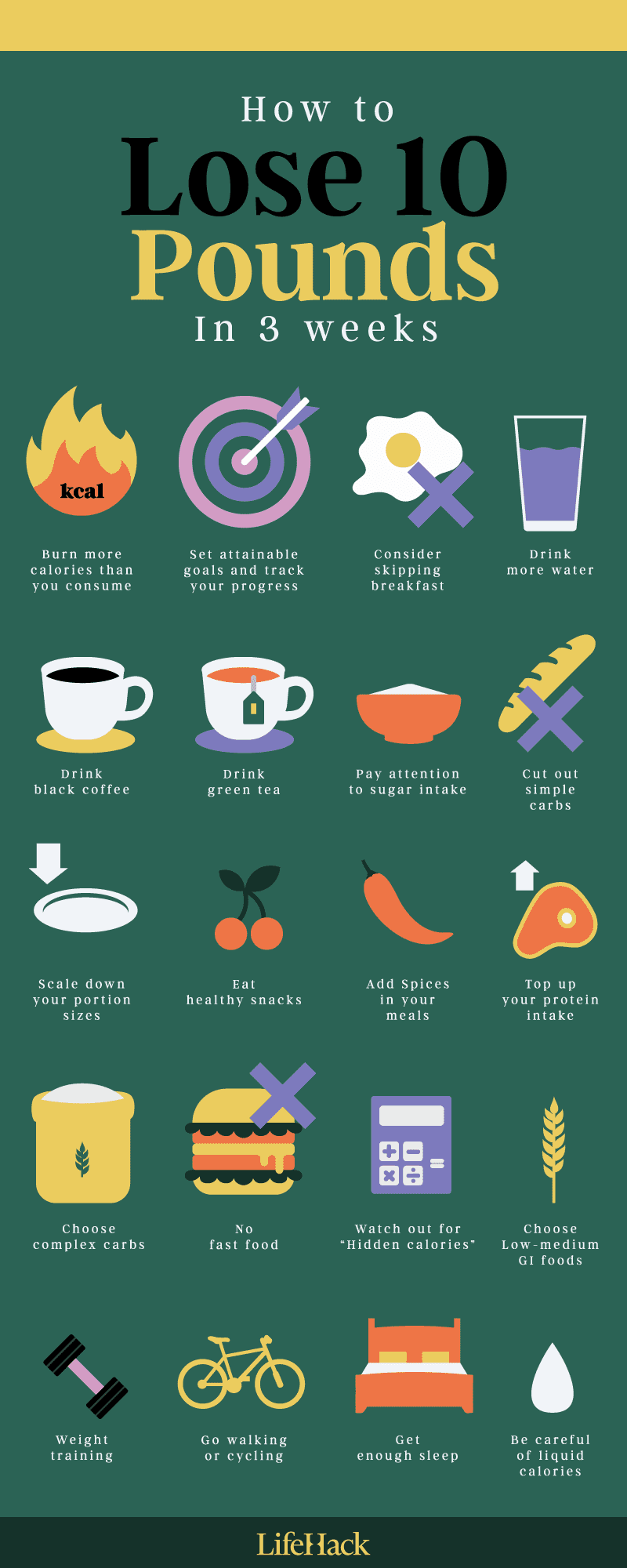Looking to lose noticeable weight in 2 weeks? This article provides effective strategies such as creating a calorie deficit, increasing physical activity, staying hydrated, prioritizing sleep, reducing stress, and more. Check it out!
Losing noticeable weight in just two weeks may seem like a daunting task, but with the right approach and dedication, it is indeed possible. In today’s fast-paced world, where time is of the essence, individuals are on the constant lookout for effective methods to shed those extra pounds quickly. While crash diets and extreme workouts may promise immediate results, they often come at the expense of overall well-being. Instead, adopting a well-rounded approach that combines a balanced diet, regular exercise, and a few lifestyle modifications can pave the way for sustainable weight loss. This article explores a range of tried and tested techniques to help you accomplish your weight loss goals within a two-week timeframe.
Effective Ways to Lose Noticeable Weight in 2 Weeks
Losing weight can be a challenging and sometimes frustrating journey. However, with the right strategies and commitment, you can achieve noticeable weight loss in just two weeks. By focusing on creating a calorie deficit, increasing physical activity, staying hydrated, prioritizing adequate sleep, reducing stress levels, eating controlled portions, avoiding processed and high-sugar foods, seeking support and accountability, avoiding crash diets, and staying consistent and patient, you can pave the way to a healthier and slimmer you. Let’s explore these tips in more detail.
1. Create a Calorie Deficit
1.1 Calculate your Basal Metabolic Rate (BMR)
Calculating your Basal Metabolic Rate (BMR) is a crucial first step in creating a calorie deficit. Your BMR represents the number of calories your body needs to maintain basic functions at rest. There are online calculators available to help you determine your BMR based on factors such as age, gender, weight, and height. By knowing your BMR, you can get a clearer understanding of how many calories you need to consume to create a calorie deficit.
1.2 Set a realistic calorie deficit
Once you have calculated your BMR, it’s time to set a realistic calorie deficit. A calorie deficit occurs when you consume fewer calories than you burn. It’s important to create a sustainable deficit that allows for gradual and healthy weight loss. Generally, a deficit of 500-1000 calories per day can lead to a safe and noticeable weight loss of 1-2 pounds per week. Consult with a healthcare professional or a registered dietitian to determine the appropriate calorie deficit for your specific needs.
1.3 Track your calorie intake
To ensure you’re maintaining a calorie deficit, it’s essential to track your calorie intake accurately. There are numerous mobile apps and websites available that can help you track your daily calorie consumption. It’s important to be diligent and honest with yourself when recording your food and beverage intake. Remember to account for all meals, snacks, and beverages throughout the day to get an accurate picture of your calorie intake.
1.4 Choose nutrient-dense foods
While creating a calorie deficit is important, it’s equally crucial to prioritize nutrient-dense foods. Nutrient-dense foods are rich in essential vitamins, minerals, and fiber while being relatively low in calories. Aim to incorporate plenty of fruits, vegetables, whole grains, lean proteins, and healthy fats into your daily meals and snacks. These foods will not only keep you satisfied but also provide your body with the necessary nutrients for optimal functioning and weight loss.
2. Increase Physical Activity
2.1 Engage in cardio exercises
Cardio exercises are an excellent way to burn calories and boost your metabolism. Engaging in activities such as brisk walking, jogging, cycling, swimming, or dancing for at least 150 minutes per week can significantly contribute to your weight loss goals. Cardio exercises not only help you burn calories during the activity itself but also continue to burn calories even after you finish exercising.
2.2 Incorporate strength training
In addition to cardio exercises, it’s important to incorporate strength training into your fitness routine. Strength training helps build lean muscle mass, which can increase your metabolism and aid in weight loss. Consider including exercises such as weightlifting, resistance band workouts, or bodyweight exercises into your fitness regimen. Aim for at least two to three sessions per week, targeting all major muscle groups.
2.3 Try high-intensity interval training (HIIT)
If you’re looking for an effective and time-efficient workout option, high-intensity interval training (HIIT) may be the answer. HIIT involves short bursts of intense exercise followed by brief recovery periods. This type of workout not only burns more calories in a shorter amount of time but also continues to boost your metabolism long after the workout is over. Incorporate HIIT workouts into your fitness routine two to three times per week for maximum weight loss results.
2.4 Stay active throughout the day
Physical activity shouldn’t be limited to structured workout sessions. It’s essential to stay active throughout the day by incorporating more movement into your daily routine. Take regular breaks to stretch and walk around if you have a sedentary job. Use the stairs instead of the elevator. Park farther away from your destination to get some extra steps in. Every little bit of movement adds up and contributes to your overall calorie expenditure.

3. Drink Plenty of Water
3.1 Hydrate your body regularly
Drinking plenty of water throughout the day is vital for overall health and weight loss. Water helps maintain proper bodily functions, aids digestion, keeps you feeling full, and supports metabolism. Aim to drink at least eight 8-ounce glasses of water per day, and more if you engage in intense physical activity or live in a hot climate.
3.2 Replace sugary drinks with water
One of the most effective ways to reduce calorie intake quickly is by replacing sugary drinks with water. Drinks such as soda, fruit juices, energy drinks, and sweetened coffee or tea can contribute a significant amount of empty calories. Opt for water as your primary beverage choice and flavor it with slices of lemon, cucumber, or berries for added taste.
3.3 Drink a glass of water before meals
Drinking a glass of water before meals can help you feel fuller, leading to reduced calorie intake. This simple habit can be especially beneficial when trying to lose weight. Additionally, staying adequately hydrated can prevent mistaking thirst for hunger, which can lead to unnecessary snacking or overeating.
3.4 Carry a water bottle with you
To ensure you’re drinking enough water throughout the day, carry a reusable water bottle with you wherever you go. Having water readily available will serve as a reminder to stay hydrated and make it easier to reach your daily water intake goals.
4. Prioritize Adequate Sleep
4.1 Set a consistent sleep schedule
Adequate sleep is crucial for overall health and plays a significant role in weight management. Set a consistent sleep schedule by going to bed and waking up at the same time every day, even on weekends. This routine helps regulate your body’s internal clock and ensures you receive quality sleep.
4.2 Aim for 7-9 hours of quality sleep
Most adults require 7-9 hours of quality sleep each night to function optimally. It’s essential to prioritize sleep and allow your body enough time to rest and rejuvenate. Lack of sleep can disrupt your hormones, leading to increased hunger, cravings, and weight gain. Make sleep a priority in your weight loss journey.
4.3 Create a sleep-friendly environment
To optimize your sleep quality, create a sleep-friendly environment in your bedroom. Keep your bedroom dark, quiet, and at a comfortable temperature. Invest in a supportive mattress and pillows to enhance your sleep comfort. Remove distractions, such as electronics, from your bedroom to promote better sleep hygiene.
4.4 Avoid caffeine and electronics before bedtime
Avoid consuming caffeine or using electronic devices close to your bedtime. Caffeine is a stimulant that can interfere with your sleep quality, while the blue light emitted by electronic devices can disrupt your body’s natural sleep-wake cycle. Instead, establish a relaxing bedtime routine that includes activities such as reading a book, practicing light stretching, or taking a warm bath.

5. Reduce Stress Levels
5.1 Practice stress-reduction techniques
High stress levels can contribute to weight gain and hinder weight loss progress. Engaging in stress-reduction techniques can be beneficial for both your mental and physical well-being. Explore activities such as deep breathing exercises, mindfulness meditation, yoga, or journaling to help you manage stress effectively.
5.2 Engage in relaxation exercises
Incorporate relaxation exercises into your daily routine to help reduce stress and promote overall relaxation. Activities such as taking a leisurely walk in nature, practicing progressive muscle relaxation, or listening to calming music can help calm your mind and body, making weight loss more achievable.
5.3 Find healthy outlets for stress
Finding healthy outlets for stress is essential for successful weight loss. Instead of turning to food for comfort, seek alternative activities that help you unwind and destress. Engage in hobbies you enjoy, spend quality time with loved ones, or try new activities that bring you joy and relaxation.
5.4 Consider mindfulness or meditation
Mindfulness and meditation practices can be incredibly beneficial for weight loss. They help increase your self-awareness, focus, and control over your eating habits. Consider incorporating mindfulness techniques, such as mindful eating or body scans, into your daily routine to enhance your weight loss efforts.
6. Eat Controlled Portions
6.1 Use smaller plates and bowls
Portion control plays a significant role in weight management. Trick your mind into thinking you’re eating more by using smaller plates and bowls. Research has shown that people tend to eat less when their plate appears full, even if the actual portion size is smaller. This simple visual cue can help you control your portion sizes and reduce calorie intake.
6.2 Be mindful of portion sizes
Developing mindfulness around your portion sizes is crucial when aiming to lose weight. Take the time to measure or estimate proper portion sizes for different food groups. Use measuring cups, a food scale, or visual cues such as the size of your palm or a deck of cards to guide your portion control. Over time, you’ll become more familiar with appropriate portion sizes and be able to eyeball them more accurately.
6.3 Eat slowly and savor each bite
Eating slowly and savoring each bite can be conducive to weight loss. It takes time for your brain to register that you’re full, so eating slowly allows you to recognize this signal and prevent overeating. Put your utensils down between bites, chew your food thoroughly, and take breaks to engage in conversation or enjoy the flavors of your meal.
6.4 Listen to your body’s hunger and fullness cues
Learn to listen to your body’s hunger and fullness cues to guide your eating habits. Eat when you’re truly hungry and stop eating when you’re comfortably full. Avoid eating out of boredom, sadness, or other emotions. Tune in to your body’s signals and respect its natural hunger and fullness rhythms.

7. Limit Processed and High-Sugar Foods
7.1 Reduce intake of processed snacks
Processed snacks are often high in calories, unhealthy fats, added sugars, and artificial ingredients. These empty-calorie foods can hinder weight loss progress. Minimize your intake of processed snacks such as chips, cookies, candy bars, and sugary granola bars. Instead, opt for healthier snacks like fruits, vegetables, nuts, or homemade energy balls.
7.2 Limit sugary drinks and desserts
Sugary drinks and desserts are often loaded with calories and offer little to no nutritional value. These calorie-dense treats can quickly derail your weight loss efforts. Limit your consumption of sugary drinks such as soda, sweetened teas, energy drinks, and fruit juices. Additionally, opt for healthier dessert alternatives such as fresh fruit, low-sugar yogurt, or homemade treats made with natural sweeteners.
7.3 Opt for whole foods
When it comes to weight loss, focusing on whole foods is crucial. Whole foods, such as fruits, vegetables, lean proteins, whole grains, and legumes, are naturally low in calories and rich in essential nutrients. They also tend to be more filling and satisfying than processed foods. Make whole foods the foundation of your meals and snacks to support your weight loss goals.
7.4 Read nutrition labels carefully
Reading nutrition labels can help you make informed choices about the foods you consume. Pay attention to serving sizes, calorie count, fat content, and added sugars when assessing the nutritional value of a product. Avoid foods with excessive amounts of saturated fats, trans fats, or added sugars. Choose products with minimal or no additives and a higher fiber content for better weight management.
8. Get Support and Accountability
8.1 Share your goals with a friend or family member
Sharing your weight loss goals with a friend or family member can provide valuable support and accountability. Choose someone who is encouraging, understanding, and willing to help you stay on track. Having a support system can motivate you on days when you may feel discouraged or tempted to deviate from your weight loss plan.
8.2 Join a weight loss support group
Consider joining a weight loss support group for additional support and accountability. These groups often provide a safe space to share experiences, gain valuable insights, and receive encouragement from others who are on a similar weight loss journey. Look for local in-person groups or online communities that align with your needs and preferences.
8.3 Hire a personal trainer or nutritionist
If you prefer more personalized guidance and accountability, hiring a personal trainer or nutritionist can be beneficial. These professionals can provide tailored exercise routines, meal plans, and ongoing support to help you achieve your weight loss goals effectively. They can also provide valuable education and guidance on proper form, nutrition, and healthy lifestyle habits.
8.4 Use mobile apps to track progress
Mobile apps can be excellent tools for tracking your progress, especially if you prefer a convenient and accessible way to monitor your weight loss journey. Numerous apps are available that allow you to track your food intake, exercise, calorie expenditure, water consumption, and even provide motivational reminders. Find a user-friendly app that aligns with your needs and goals to keep you on track.

9. Avoid Crash Diets
9.1 Understand the risks of crash diets
While it may be tempting to turn to crash diets for quick results, it’s important to understand the risks involved. Crash diets typically involve severe calorie restriction and often lack essential nutrients. They may lead to muscle loss, nutrient deficiencies, a slowed metabolism, and rebound weight gain once the diet ends. It’s best to focus on sustainable lifestyle changes instead.
9.2 Focus on sustainable lifestyle changes
Instead of relying on temporary and unsustainable approaches, focus on making long-term lifestyle changes for lasting weight loss. Incorporate healthy habits into your daily routine, such as balanced and nutritious meals, regular physical activity, stress management, and adequate sleep. Gradual and sustainable changes are more likely to lead to successful weight loss and improved overall health.
9.3 Seek professional guidance if needed
If you’re unsure about how to approach your weight loss journey or have specific health concerns, seek professional guidance. Consult a registered dietitian, a certified personal trainer, or your healthcare provider for personalized advice and guidance tailored to your unique needs and circumstances. They can provide you with evidence-based strategies for safe and effective weight loss.
9.4 Emphasize long-term health over quick results
When it comes to weight loss, it’s crucial to prioritize long-term health and well-being over quick results. Sustainable weight loss occurs gradually and involves adopting healthy habits that can be maintained for a lifetime. Shift your focus from solely achieving a number on the scale to improving overall health markers such as blood pressure, cholesterol levels, and energy levels.
10. Stay Consistent and Patient
10.1 Set realistic expectations
Setting realistic expectations is essential for successful weight loss. Remember that healthy and sustainable weight loss occurs at a rate of 1-2 pounds per week. Avoid comparing your progress to others and celebrate your individual achievements along the way. Stay focused on your goals and trust the process, knowing that consistent effort will yield long-lasting results.
10.2 Celebrate small victories
In your weight loss journey, celebrate the small victories that occur along the way. Recognize and reward yourself for reaching milestones, such as consistently sticking to your workouts, making smart food choices, or fitting into a smaller clothing size. These small victories can provide motivation and inspire you to continue working towards your ultimate weight loss goals.
10.3 Keep a positive mindset
Maintaining a positive mindset is crucial throughout your weight loss journey. It’s normal to encounter obstacles or experience temporary setbacks. However, by staying positive and focusing on the progress you’ve made, you’ll be better equipped to overcome challenges and stay committed to your goals. Practice self-compassion and remind yourself that every step forward, no matter how small, brings you closer to your desired outcome.
10.4 Stay committed to your weight loss journey
Lastly, staying committed to your weight loss journey is key to achieving noticeable results in just two weeks. Remember why you embarked on this journey in the first place and keep that motivation alive. Surround yourself with positive influences, seek support when needed, and consistently implement the strategies and habits outlined in this article. By staying dedicated and committed, you’ll be well on your way to achieving your weight loss goals.
In conclusion, losing noticeable weight in just two weeks is achievable with a strategic and comprehensive approach. By creating a calorie deficit, increasing physical activity, staying hydrated, prioritizing sleep, reducing stress levels, eating controlled portions, avoiding processed and high-sugar foods, seeking support, avoiding crash diets, and staying consistent and patient, you can make significant progress towards your weight loss goals.
Remember to consult with healthcare professionals before making any drastic changes to your diet or exercise routine. Start implementing these tips and watch as you transform into a healthier and happier version of yourself.
